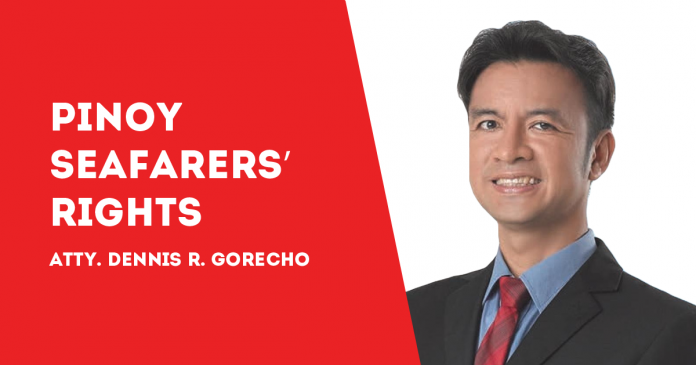
THE YEAR 2021 started with a bang for me, literally, due to a car accident.
On my way home from the grocery evening of Jan. 1, my car was hit along C5 extension in Las Piñas City by a speeding Lalamove motorcycle driver.
After my car safely turned left in an intersection, the motorcycle directly rammed on the right side of my car causing heavy dents on the front door and shattering the window.
Fortunately, I did not suffer the common injuries from side-impact crashes thatinclude head concussion or traumatic brain injury, neck or back injuries, herniated discs, whiplash, nerve damage, spinal cord damage, and paralysis.
I only had minor cuts due to the splintered glasses.
It is classified as a T-bone accident wherein the front of one vehicle strikes the side of another at an intersection, forming the shape of a “T” at the point of impact.
I have nothing against motorcycle drivers but they should bear in mind that they are not the kings of the road. Their carelessness may lead to damages, injuries and worse, fatalities.
There are those called kamote riders– unruly or reckless motorcycle riders who disregard rules of the road, right of way, or traffic rules and regulations.
In 2019, the Metropolitan Manila Development Authority documented 31,279motorcycle accidents in Metro Manila — or an averageof86 incidents a day, with 394 deaths, making them the main killer on the road.
If the road rules are to motorists, the International Regulations for Preventing Collisions at Sea 1972 (COLREGs) are to mariners.
COLREGs are published by the International Maritime Organization (IMO) and set out, among other things, the “rules of the road” or navigation rules to be followed by ships and other vessels at sea to prevent collisions between two or more vessels.
Causes of any ship collision may include blatant human error as well as any technical malfunction.
The COLREGs were adopted as a convention on Oct. 20, 1972 and entered into force on July 15, 1977 with 160 ratifying parties as of Aug. 1, 2020.
Under the convention, every vessel shall at all times maintain a proper lookout by sight and hearing while proceeding at a safe speed so as to make a full appraisal of the situation and of the risk of collision.
Any action taken to avoid collision shall be made in ample time and with due regard to the observance of good seamanship.
Under the “give way” rule, when two power-driven vessels are crossing so as to involve risk of collision, the vessel which has the other on her starboard side shall keep out of the way and shall, if the circumstances of the case permit, avoid crossing ahead of the other vessel.
If necessary to avoid collision or allow more time to assess the situation, a vessel shall slacken its speed or take all way off by stopping or reversing her means of propulsion.
Adverse effects of a collision include injury or death of passengers or crew, the environmental impact, more so if one of the vessels is carrying harmful material dangerous to marine life, and financial losses to the owners of the vessels.
The sinking of the passenger vessel MV Doña Paz on Dec. 20, 1987 was considered as one of the worst peacetime maritime disasters and the worst in the 20th century.
At around 10:30 p.m., MV Doña Paz collided with motor tanker, MT Vector, near Dumali Point between the provinces of Marinduque and Oriental Mindoro.
With only 25 survivors, MV Doña Paz was even named the Asia’s Titanic as the collisionresulted to the death of 4,341 passengers.
The vessel was overcrowded, with at least 2,000 passengers not listed on the manifest.
The maritime profession has always been identified as a perilous job on board vessels that cross ocean boundaries and replete with health and safety hazards, in relation to the risks of accidents, illnesses and mortality.
The job of a seafarer is, indeed, not exactly a walk in the park.
The European Maritime Safety Agency declared in a report that there were 745 work-related fatalities among maritime workers and nearly 9,000 persons injured between 2011 and 2020, among other tragic statistics of this sector.
For centuries, the “Good Samaritan” maritime rescue doctrine encourages seafarers to go to the aid of life and property in distress, including those involved in collisions.
Regardless of who is at fault in a collision at the high seas, vessels that sustained minimal or no damage are obliged to rescue mariners distressed or shipwrecked by the mishap.
The United Nations Convention on Law of the Sea says that every signatory to the convention must require the master of a ship flying its flag to render assistance to any person found at sea in danger of being lost and to proceed to the rescue of persons in distress.
The exemption is when the assisting vessel, the crew or the passengers on board would be seriously endangered as a result of rendering assistance to those in distress.
***
Atty. Dennis Gorecho heads the seafarers’ division of the Sapalo Velez Bundang Bulilan law offices. For comments, email info@sapalovelez.com, or call 09175025808 or 09088665786)/PN






